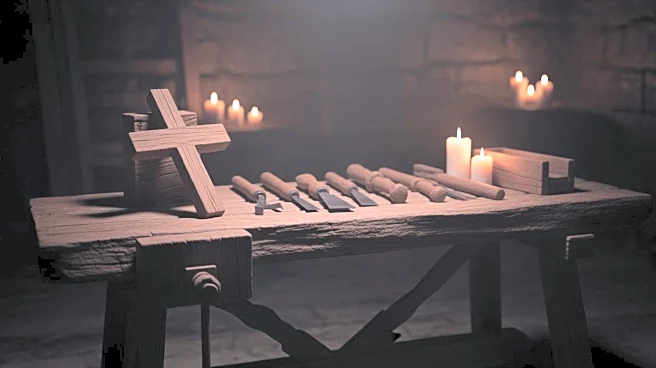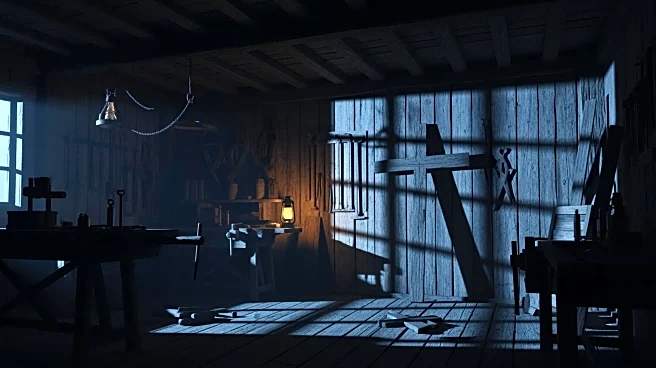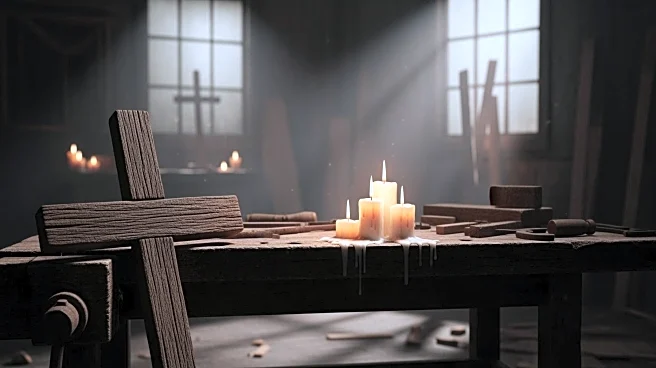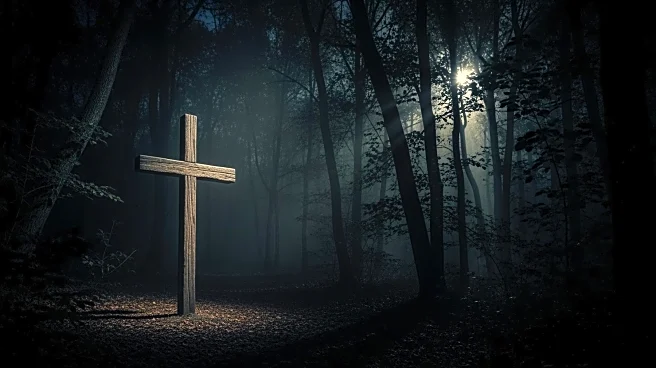What's Happening?
Nicolas Cage takes on the role of Joseph in the new horror film 'The Carpenter's Son,' directed by Lotfy Nathan. The movie explores a high-concept narrative where Mary and Joseph protect a teenage Jesus,
whose miracles are perceived as witchcraft by the surrounding community. Cage's portrayal of Joseph delves into the immense pressure of safeguarding the divine child, leading to an existential crisis as he faces both human and spiritual challenges. The film is inspired by the Infancy Gospel of Thomas, a lesser-known set of stories from Jesus' childhood, which Nathan found compelling for its potential as an origin story. The narrative introduces a form-shifting antagonist, Satan, adding a twist to the traditional biblical tale.
Why It's Important?
The film 'The Carpenter's Son' offers a unique blend of religious themes and horror, potentially appealing to audiences interested in unconventional storytelling. By exploring the nativity story through a horror lens, the film challenges traditional perceptions of biblical narratives, possibly sparking discussions on religious interpretations and cinematic creativity. Nicolas Cage's involvement brings star power to the project, which could attract a wider audience and generate interest in religious-themed films. The inclusion of Satan as a character adds a layer of complexity, inviting viewers to reconsider the dynamics between good and evil in religious contexts.
What's Next?
As 'The Carpenter's Son' hits theaters, it may prompt reactions from religious communities and film critics alike, who could debate its portrayal of biblical figures and themes. The film's release might influence future projects that blend religious narratives with other genres, encouraging filmmakers to explore new storytelling avenues. Audience reception will likely determine the film's success and its impact on the horror genre, particularly in how it integrates religious elements. Discussions around the film could lead to broader conversations about the role of religion in cinema and its potential to address existential themes.
Beyond the Headlines
The film's exploration of Jesus' childhood through a horror narrative raises ethical questions about the portrayal of religious figures in popular media. It challenges viewers to consider the implications of blending sacred stories with entertainment, potentially influencing cultural perceptions of religious texts. The film's approach to depicting Mary and Joseph's struggles may resonate with audiences facing their own existential crises, offering a relatable perspective on parental pressures and spiritual dilemmas. This narrative choice could contribute to ongoing debates about the intersection of religion and art, highlighting the power of storytelling in shaping cultural discourse.











